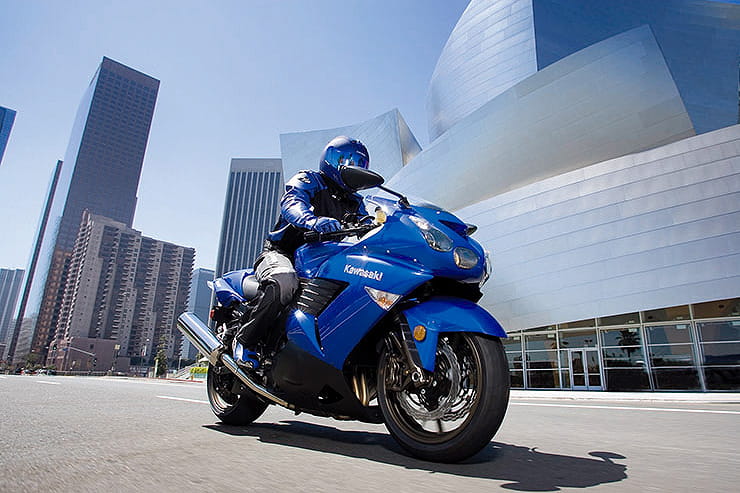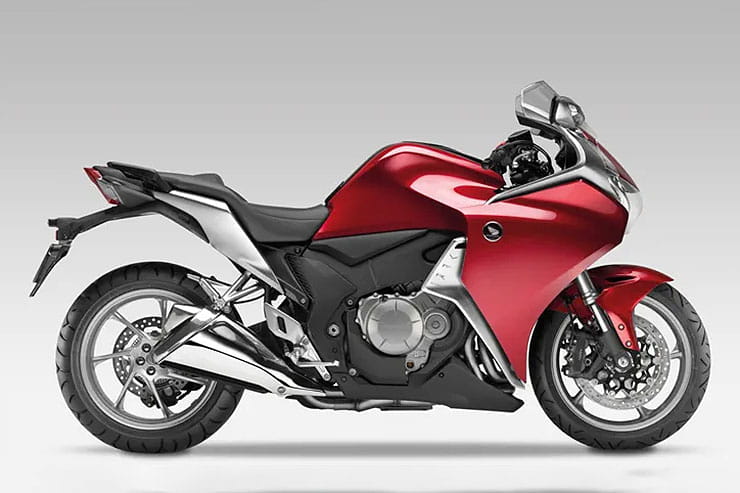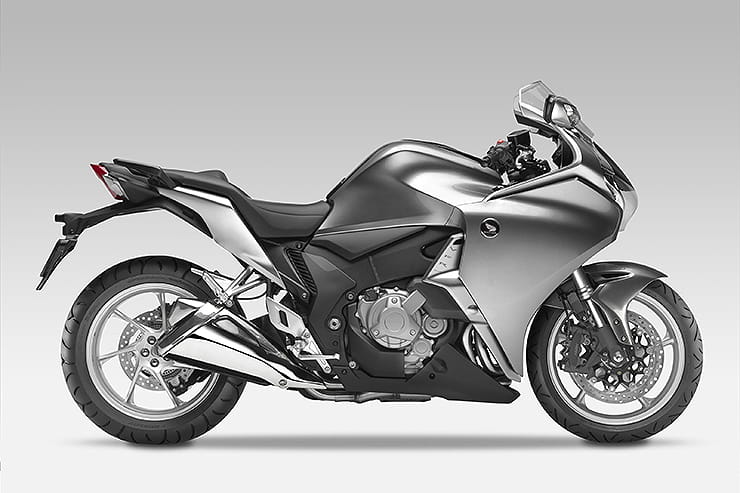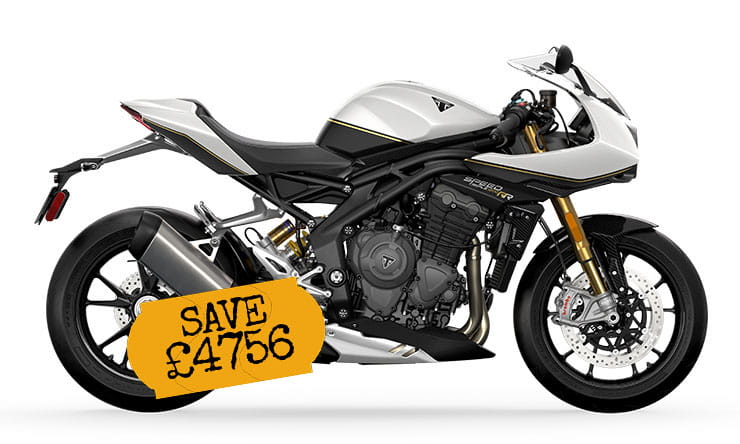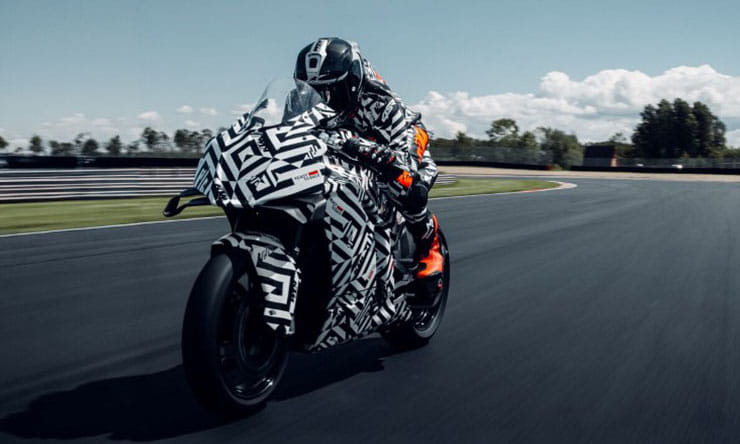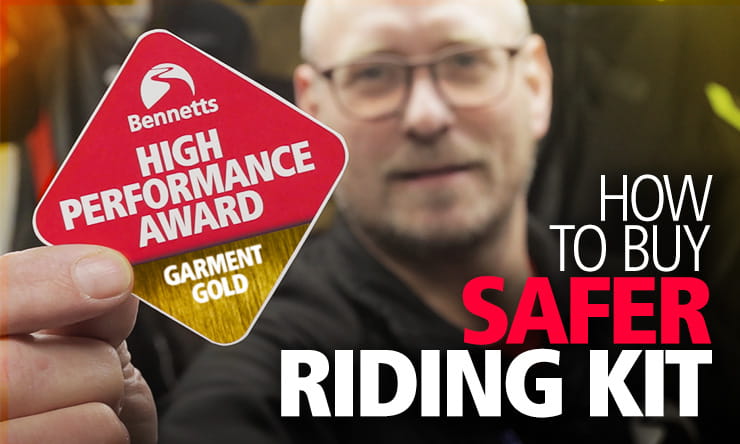Price: £3500 - £8000 | Power: 170bhp | Weight: 267kg | Overall BikeSocial Rating: 3/5
Launched with great excitement in late 2009, Honda promised the all-new VFR1200F would be the ultimate sports tourer. Packing a brand new V4 engine (Honda’s favoured configuration) the VFR was destined to replace the ever-green Pan European and provide mile-munchers with all the bike they could ever wish for that would also be loved by sporty tourers. Packing such state of the art tech as C-ABS and (later) traction control, the VFR also debuted Honda’s DCT gearbox. But the VFR didn’t sit well with buyers and a high price tag, reliability issues and poor fuel economy saw its sales disappoint as serious tourers stayed with the Pan European instead. Honda stuck with their concept and upgraded the VFR as the years progressed, and even built the ‘adventure bike’ Crosstourer using the VFR as a base, but it never really hit the mark and was eventually discontinued in 2017. Nowadays viewed as a cheap and fairly reliable machine, a lot of the VFR’s initial failings can be forgiven and it isn’t a bad used buy. Not great but if you can find a good one at a cheap price, it is a good do-it-all that can certainly be taken on a serious touring trip and enjoyed at a brisk pace.
Honda VFR1200F (2010-2017) Price
When it was first launched the VFR1200F instantly came under fire for its price tag, which was undeniably high at £12,000 with DCT upping this by another £1000. Honda tried to convince riders that the reason it was so steep was down to a high level of build quality and the complexity of the V4 engine but when a VFR800 was £8000 and a Pan European £14,000, this excuse simply didn’t float, especially considering the initial teething issues the VFR suffered from, its poor mpg figures and its lack of panniers. Nowadays the VFR1200F’s unpopularity sees its price tags pleasingly low and you can find an early model for as little as £3500 as long as you don’t mind it covering a fair few (over 40,000...) miles. Dealers tend to ask between £4000 and £5000 for a 30,000-mile area bike with £5500 buying you one that is about to, or has only just, crossed 20,000 miles. Armed with £5500, you should be able to buy either a DCT or manual gearbox model (DCT seldom adds to its used value) that has covered about 20,000 miles and has panniers and a top box fitted. That’s not a bad buy and you certainly don’t need to spend close to £8000 on a late 2016 model.
Pros & Cons
- A decent long-distance tourer
- Low price tag
- Lots come with full luggage
- Annoying brake issues
- The DCT is pretty basic
- Poor fuel range
Engine and Performance
The VFR has quite an interesting engine as while it is a 16-valve V4, it only has a single cam in its heads. Called UNICAM by Honda, this design was taken from their motocross bikes and was claimed to make the engine more compact. Not only that, the V4’s layout is a bit odd with the rear cylinders placed closer together than the forward two, giving the bike a narrow ‘waist’ and helping reduce the stretch to the floor for the rider’s feet, which is helpful on a 267kg (plus pillion and luggage...) bike. That said, owners do report it can get a bit hot during summer, which is a negative consequence of this compact design.
When it comes to the VFR’s power, it is hard to argue with a 170bhp and 92ftlb V4! A very impressive engine that is remarkably fast for a tourer, there is lots to love about the way the VFR responds once up and running. Low down in its rev range you would rightly expect a bit more poke on a V4 (it was improved in the 2012 update) but get it above 5000rpm and it is certainly no slouch. The fuel injection is a bit jerky but acceptable and aside from a recall in 2010 to remove some swarf from the engine (!!!) owners don’t report any major mechanical woes. The DCT gearbox, however, does split opinions...
Essentially DTC is simply a smooth changing conventional gearbox that instead of a foot shift has buttons to change gears and an optional automatic mode. Containing two clutches, the first clutch works 1,3 and 5 gears with the other operating the rest. When one clutch is disengaged the other clutch is working, and vice-versa so at any one time only one clutch is actually engaged and allowing its gears to turn. The neat part when it comes to the engineering side is how Honda managed to find a way for one clutch to run its input shaft inside the other clutch’s, reducing the size of the unit considerably through a tube within a tube design. So that’s the tech, what’s the benefits?
As well as lacking a clutch lever, in theory DCT delivers a smooth gearchange action – however in practice it isn’t quite so clear-cut. Although you can over-ride it, DCT tends to be overly enthusiastic when it comes to swapping gears in automatic mode, meaning you are often left riding very low in the rev range. It’s a Marmite system (it was updated in 2012 and made marginaly better) that you really need to try out to see if you like it before you buy.
When it comes to buying used, the VFR requires servicing every 8000 miles, which is good, although the valve clearances need checking every 16,000 miles, which is costly on a V4 despite its UNICAM design. If the bike has a good service record, all should be well. Just keep on top of changing the oil in the hub drive system or you can prematurely wear out the bearings within. If you go for a DCT model, always check the system works in all of its modes (auto and manual) and goes through the gears smoothly. If you want traction control, that arrived with the 2012 model update, although it is pretty basic in its action.
Honda VFR1200F (2010-2017) Handling & Suspension
Starting with the good, the VFR does handle very well for such a big and heavy bike. Honda billed it as a sport tourer and it can certainly do sports, undeniably better than a Pan European too. A deliberately long swingarm ensures stability (err, let’s not mention Pans here...) and the VFR has a good natural balance with its weight distribution, making low speed work easier than you would imagine considering its bulk. But it’s not all good news...
The standard suspension is disappointing on the VFR and doesn’t seem to last the test of time very well, especially the shock. Owners report that if you get 30,000 miles from the shock you are doing very well and the preload adjuster also has an annoying habit of seizing up. When buying used, check all moves freely and the shock still has some damping left in it as a replacement will cost you roughly £500. And then there are the brakes...
Oddly for a Honda model, the C-ABS doesn’t come in for much criticism however the brake calipers themselves do. The six-piston units are notorious for seizing pistons and that can lead to warped discs. Always get the front in the air (use the centre stand) and listen for any sounds of dragging pads and while out on a test ride, feel for a pulsing from the front brake lever that hints at warped disc. And when you own the bike, spend time cleaning the calipers to ward off corrosion, especially during the winter months as it will save you hassle in the long run.
Comfort & Economy
Here we have the VFR’s huge Achilles’ Heel – fuel economy. Owners report the VFR averages about 36mpg, which is pretty dismal and means that you can only get about 146 miles from the 18.5 litre tank. For serious tourers, who the bike was mainly aimed at, this was simply not good enough, especially as the fuel warning tended to go on at about 120 miles. Honda attempted to rectify the situation in 2012 by adding 0.5 litres to the fuel tank’s capacity (wow, thanks...) and refining the fuel injection system but despite claiming a new improved range of 186 miles, the reality was that you could just about squeeze 160 miles if you were lucky but again, by 130 miles you were starting to look for a fuel stop. Poor show Honda and this simple error really does dent the VFR’s desirability because when it comes to comfort, the VFR is really very good indeed.
With a huge two-piece seat (which was also improved in 2012) as well as a decent fairing and fairly effective non-adjustable screen, the VFR is a good mile-muncher. Far more targeted towards touring than sports, you can really soak up the miles on one and it has sensible-touring related features such as a shaft drive and integrated pannier mounts. What a shame Honda didn’t think to give it a bigger fuel tank...
Honda VFR1200F (2010-2017) Equipment
The VFR came with C-ABS as standard alongside the option of DCT and in 2012 also gained a basic form of TC. As it was such a slow seller, many VFRs were sold with full luggage already fitted in an effort to tempt buyers, which is worth about £1500 new so expect to pay a small premium for it on a used bike. Heated grips are a common addition (either Honda’s own or aftermarket items) and the VFR come with Honda’s HISS immobiliser system as standard.
A lot of owners fit taller screens as the OE one is quite short and non-adjustable and some go for soft luggage options with a small tank bag popular for commuters or short-hop riders. Although rare, a very few bikes have aftermarket cans fitted (be wary, it’s just not that kind of bike so hints at a low speed spill) and there is the occasional tail tidy. Always check the quality of the accessories as some pannier systems (that are non-Honda) are better than others.
VFR1200F owners tend to be those who want to go touring and enjoy the corners when they get to their destination and that means its main rivals are either sporty-targeted full-dress tourers or big-capacity sports tourers. Within this group, the VFR is generally the cheaper option.
BMW K1300S (2009-2016) | Approx Price: £4000-£9000
Power/Torque: 175bhp/103lb-ft | Weight: 228kg
Yamaha FJR1300 (2001-2020) | Approx Price: £3000-£11,500
Power/Torque: 144bhp/102lb-ft | Weight: 292kg
Kawasaki ZZR1400 (2012-2020) | Approx Price: £3500 - £15,000
Power/Torque: 198bhp/119lb-ft | Weight: 239kg
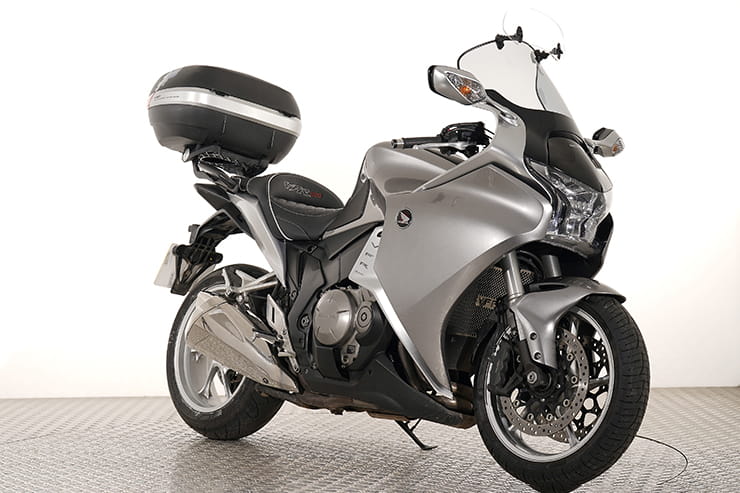
Honda VFR1200F (2010-2017) Verdict
It would be easy to criticise the VFR1200F as it does undeniably have a few issues that put a damper on ownership. However there is no denying it is good value in the used market and comes with excellent build quality (aside from its brakes...) and that makes it tempting. Owners seem very happy with the Honda and as long as you accept it is limited in its fuel range, the suspension is a touch budget and the V4 isn’t quite as gutsy low down as you may expect, it makes for a decent buy. Not outstanding, but decent.
Honda VFR1200F (2010-2017) spec
|
Original price
|
£12,000 (£13,000 for DCT)
|
|
Current price range
|
£3,500-£8,000
|
|
Capacity
|
1237cc
|
|
Bore x Stroke
|
81mm x 60mm
|
|
Engine layout
|
V4
|
|
Engine details
|
SOHC, 16v, liquid-cooled
|
|
Power
|
170bhp (127kW) @ 10,000rpm
|
|
Torque
|
95lb-ft (129Nm) @ 8750rpm
|
|
Top speed
|
145mph
|
|
Transmission
|
6-speed, shaft drive. Optional DCT
|
|
Average fuel consumption
|
36mpg
|
|
Tank size
|
19 litres (18.5 pre 2012)
|
|
Max range to empty (theoretical)
|
186 miles
|
|
Reserve capacity
|
32miles
|
|
Rider aids
|
TC (post 2012), C-ABS, DCT gearbox (optional)
|
|
Frame
|
Aluminium twin-spar
|
|
Front suspension
|
43mm telescopic forks
|
|
Front suspension adjustment
|
Preload adjustable
|
|
Rear suspension
|
Monoshock
|
|
Rear suspension adjustment
|
Adjustable preload and rebound damping
|
|
Front brake
|
2 x 320mm discs, six-piston calipers. C-ABS
|
|
Rear brake
|
276mm disc, two-piston caliper. C-ABS
|
|
Front tyre
|
120/70-ZR17
|
|
Rear tyre
|
190/55 – ZR17
|
|
Rake/Trail
|
25.5°/ 101mm
|
|
Dimensions (LxWxH)
|
2244mm x 752mm x 1222mm
|
|
Wheelbase
|
1545mm
|
|
Ground clearance
|
128mm
|
|
Seat height
|
815mm
|
|
Kerb weight
|
267Kg Wet
|
Looking for motorcycle insurance? Get a quote for this motorbike with Bennetts bike insurance
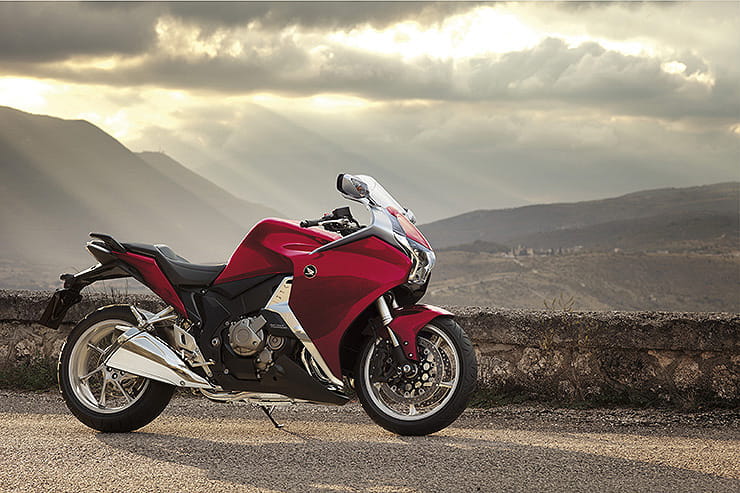



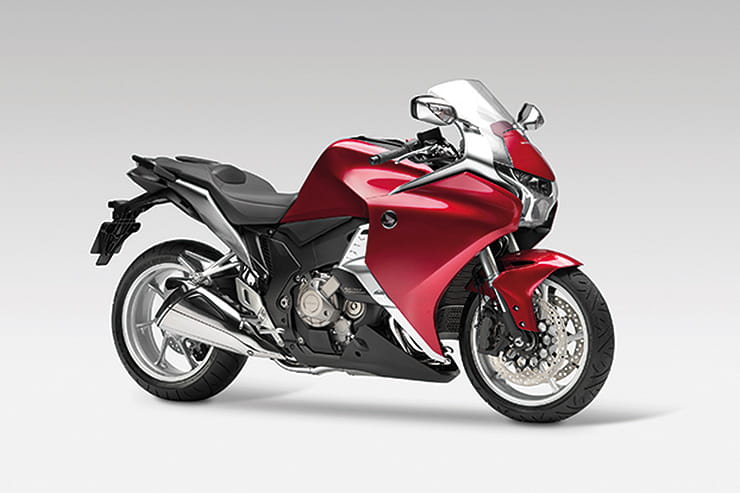
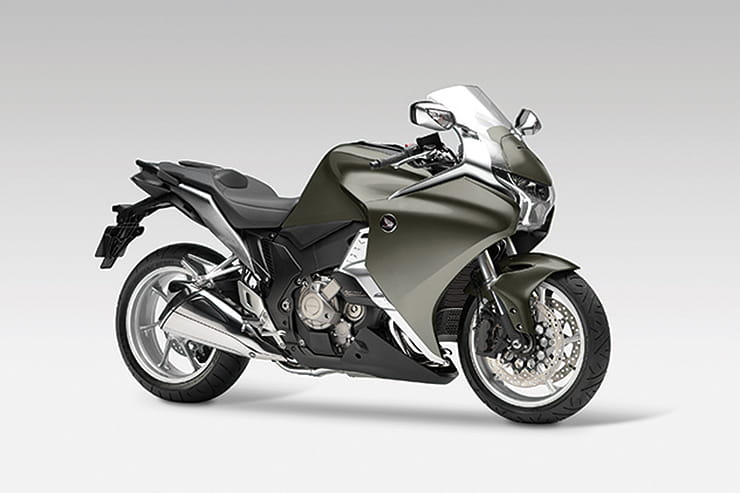
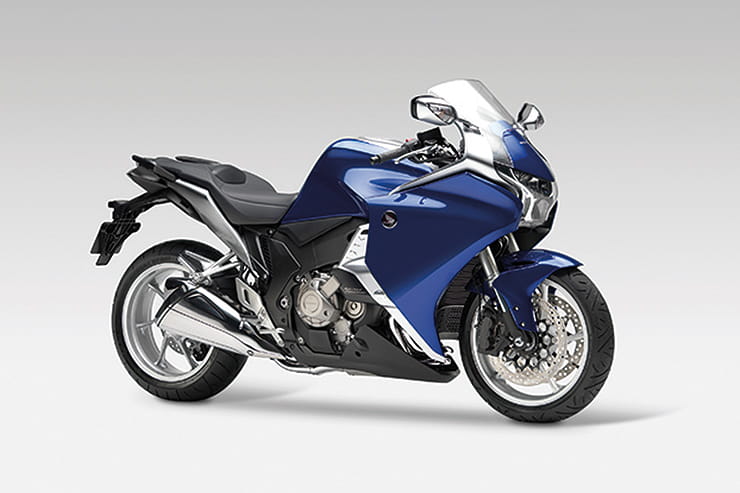
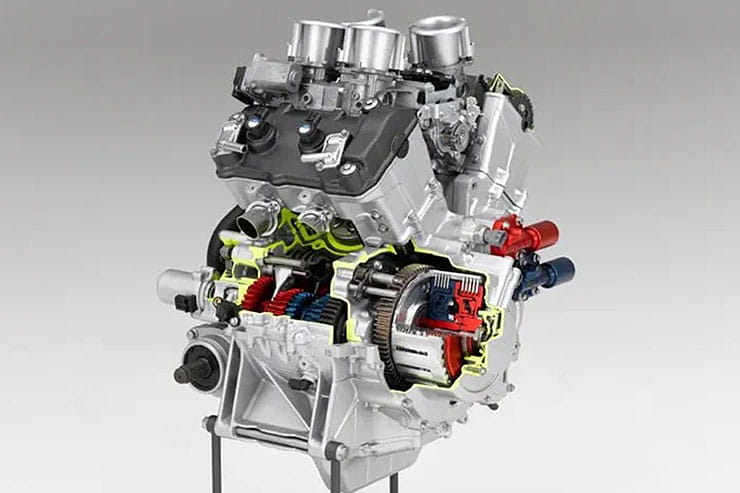
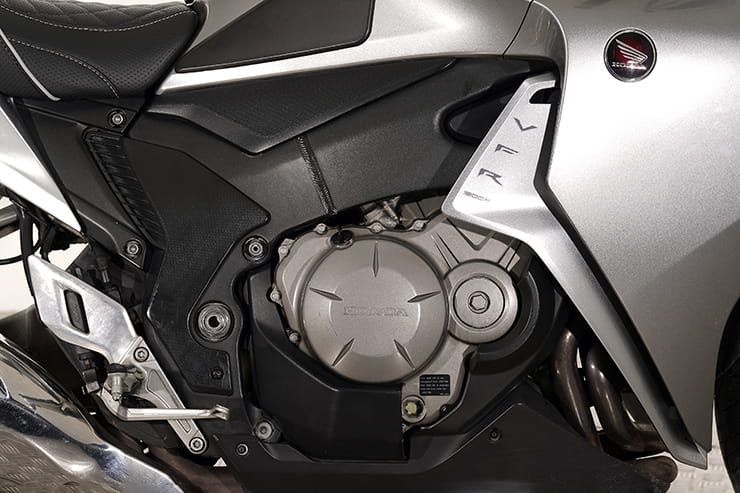
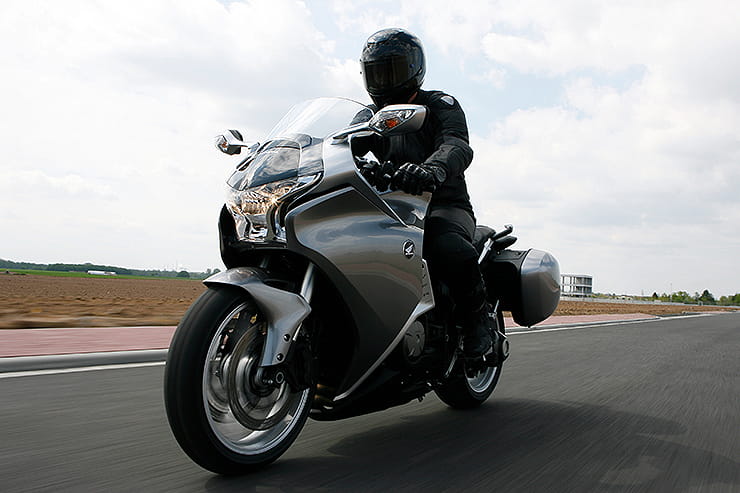
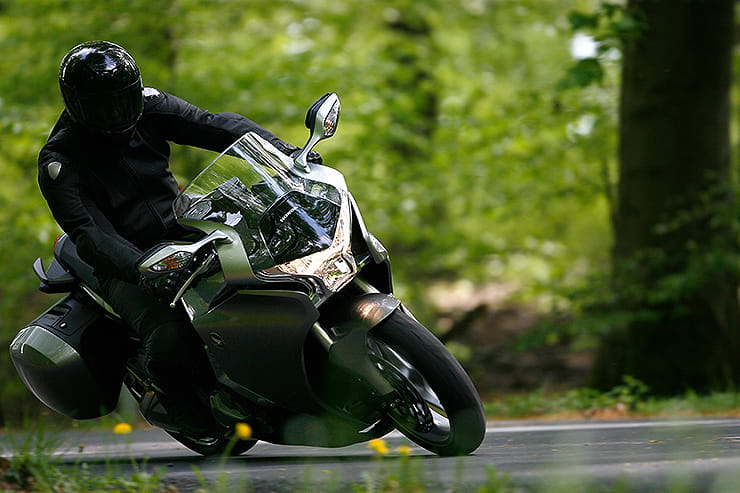
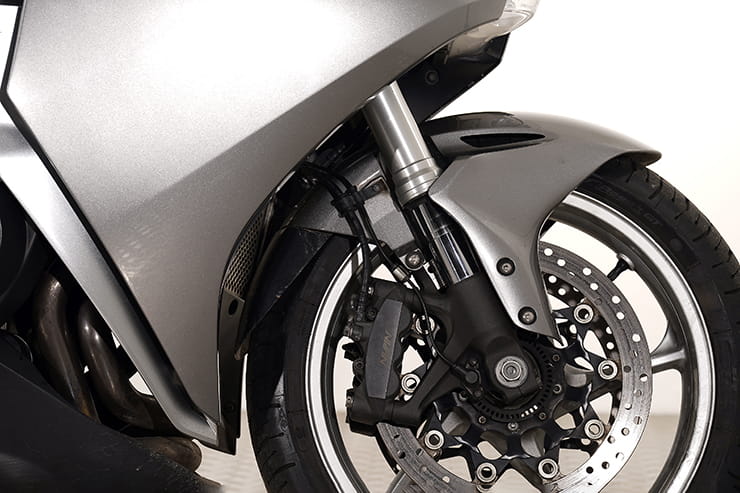
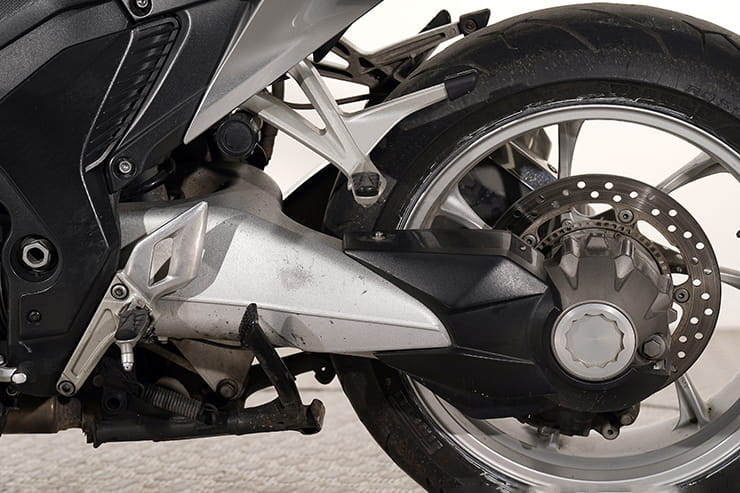
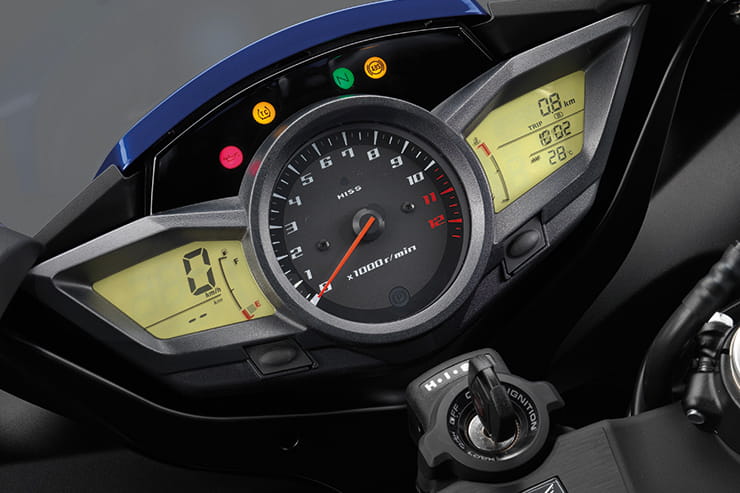
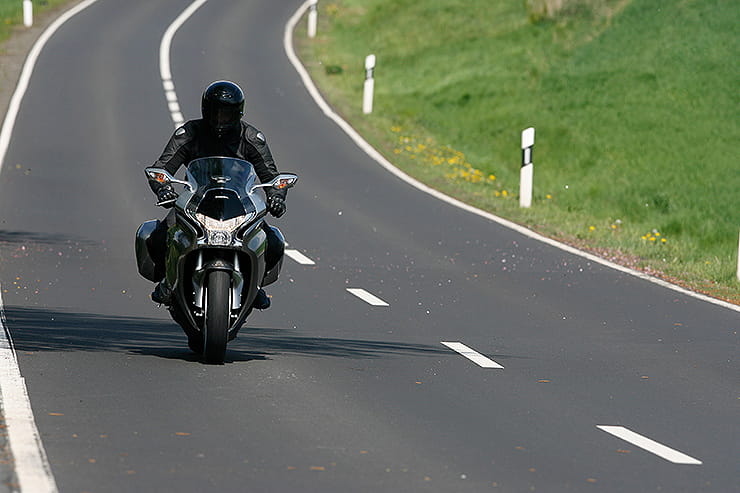
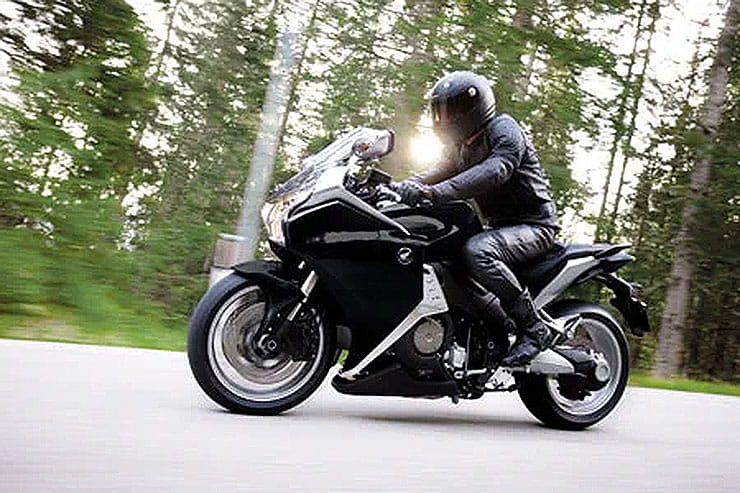
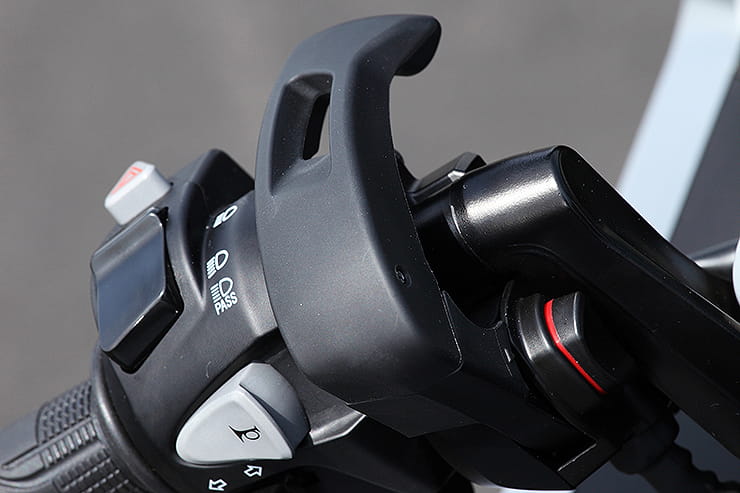
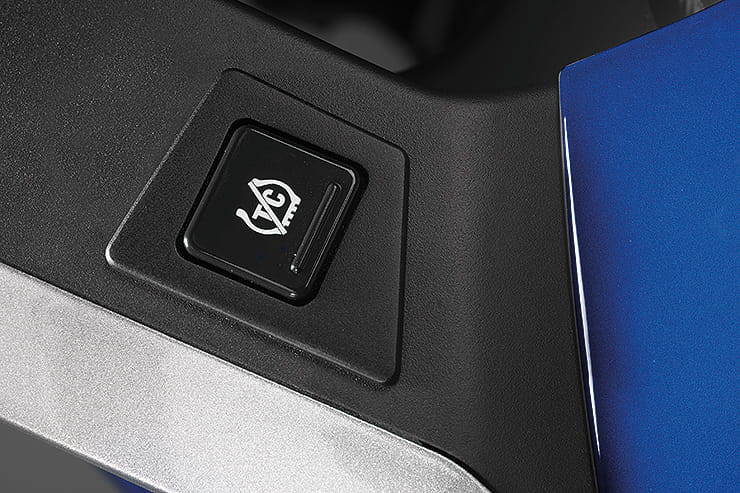
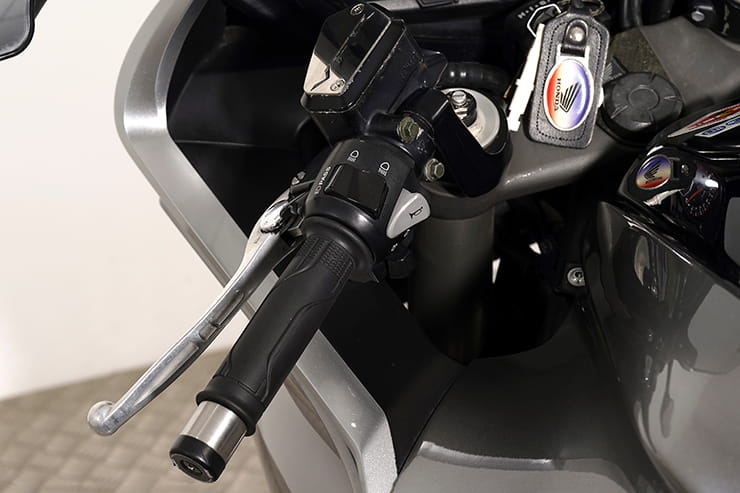
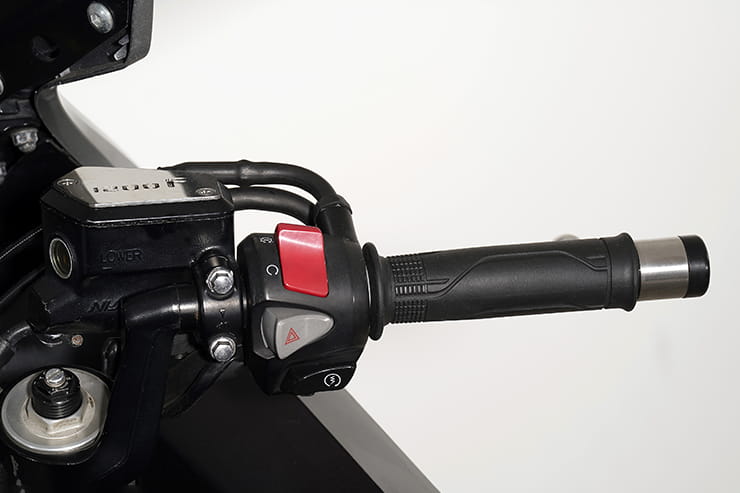

.ashx?h=493&la=en&w=740&hash=26E090A340F355596E66103B13E1CDB4ED4D3EBE)
